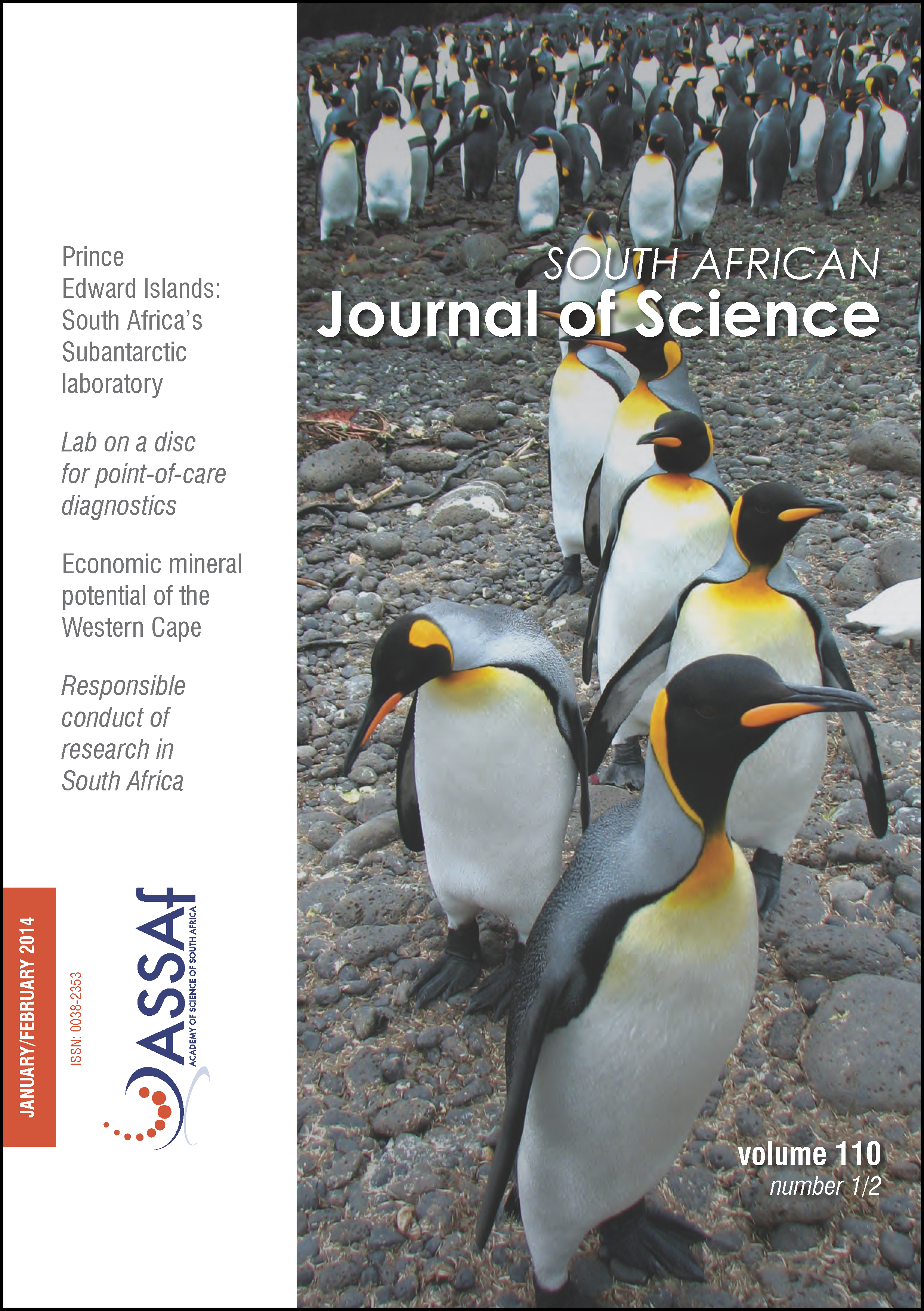Dynamics of arable land requirements for food in South Africa: From 1961 to 2007
DOI:
https://doi.org/10.1590/sajs.2014/20120088Keywords:
dietary pattern, historical analysis, land requirements for food, South Africa, apartheidAbstract
Food consumption puts pressure on natural resources and arable land. In the present study, we examined the dynamics of land requirements for food in South Africa from 1961 to 2007 and investigated the relationships between dietary patterns, yield, cropping intensity, population and the area of required land using the thought experiment method. Strong population growth and the development of agricultural technology (indicated by yield) accounted for more than a 2.5-fold increase in the total land requirements for food from 1961 to 2007. Before the 1990s, the increase in crop yields enabled constant land requirements, whereas, after the 1990s, the combined effect of agricultural technology and population growth, together with a small contribution from dietary changes, led to an increase in the land requirements for food. Our findings confirm that the variation in land requirements for food is a complex, non-linear function of agricultural production techniques, population growth and dietary patterns and show that the complex relationship between dietary pattern changes, and economic development challenges future predictions of land requirements for food in South Africa.Published
2014-02-03
Issue
Section
Research Article
License

All articles are published under a Creative Commons Attribution 4.0 International Licence
Copyright is retained by the authors. Readers are welcome to reproduce, share and adapt the content without permission provided the source is attributed.
Disclaimer: The publisher and editors accept no responsibility for statements made by the authors
How to Cite
Cui, X., Nath, R., Luan, Y., & Ferrat, M. (2014). Dynamics of arable land requirements for food in South Africa: From 1961 to 2007. South African Journal of Science, 110(1/2), 1-8. https://doi.org/10.1590/sajs.2014/20120088
Views
- Abstract 393
- PDF 417
- EPUB 173
- XML 201












.png)